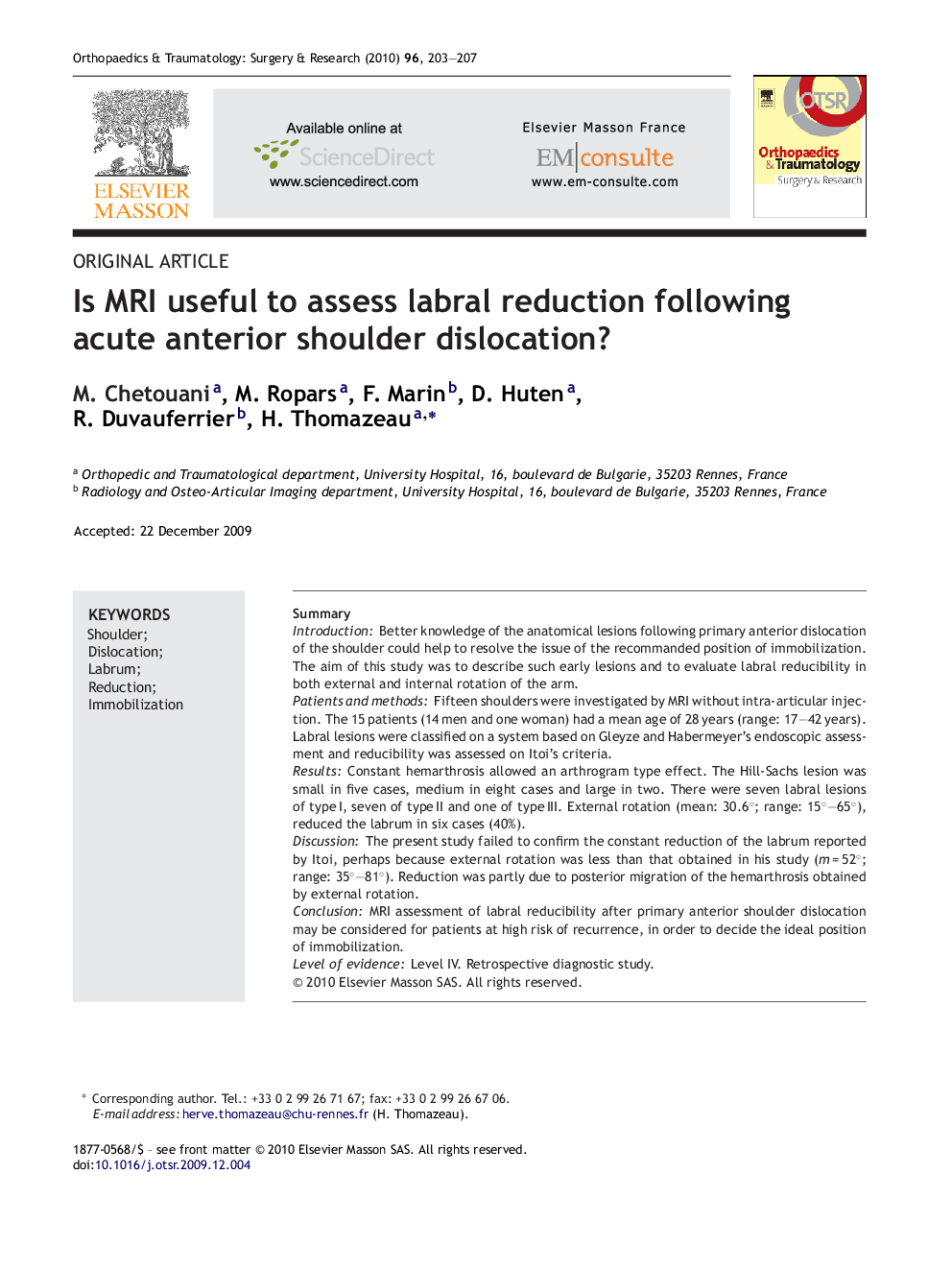| Article ID | Journal | Published Year | Pages | File Type |
|---|---|---|---|---|
| 4082444 | Orthopaedics & Traumatology: Surgery & Research | 2010 | 5 Pages |
SummaryIntroductionBetter knowledge of the anatomical lesions following primary anterior dislocation of the shoulder could help to resolve the issue of the recommanded position of immobilization. The aim of this study was to describe such early lesions and to evaluate labral reducibility in both external and internal rotation of the arm.Patients and methodsFifteen shoulders were investigated by MRI without intra-articular injection. The 15 patients (14 men and one woman) had a mean age of 28 years (range: 17–42 years). Labral lesions were classified on a system based on Gleyze and Habermeyer's endoscopic assessment and reducibility was assessed on Itoi's criteria.ResultsConstant hemarthrosis allowed an arthrogram type effect. The Hill-Sachs lesion was small in five cases, medium in eight cases and large in two. There were seven labral lesions of type I, seven of type II and one of type III. External rotation (mean: 30.6°; range: 15°–65°), reduced the labrum in six cases (40%).DiscussionThe present study failed to confirm the constant reduction of the labrum reported by Itoi, perhaps because external rotation was less than that obtained in his study (m = 52°; range: 35°–81°). Reduction was partly due to posterior migration of the hemarthrosis obtained by external rotation.ConclusionMRI assessment of labral reducibility after primary anterior shoulder dislocation may be considered for patients at high risk of recurrence, in order to decide the ideal position of immobilization.Level of evidenceLevel IV. Retrospective diagnostic study.
